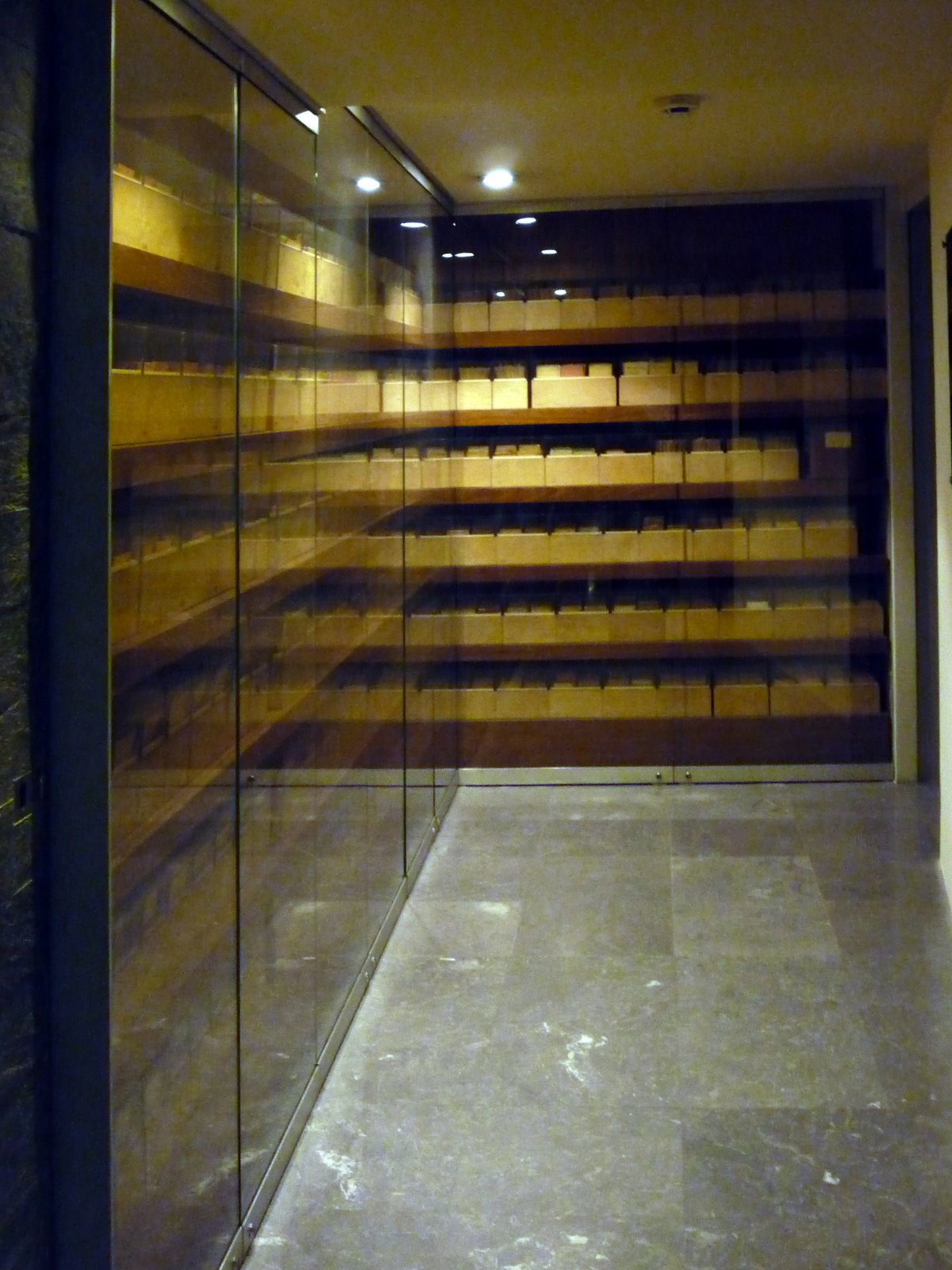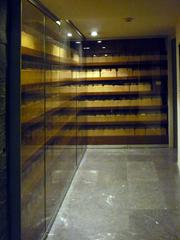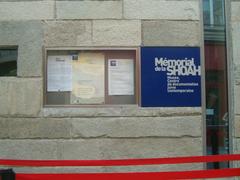
Mémorial de la Shoah Paris: Visiting Hours, Tickets, and Historical Guide
Date: 14/06/2025
Introduction
The Mémorial de la Shoah in Paris is France’s foremost Holocaust memorial and documentation center, dedicated to commemorating the victims of the Shoah, educating the public, and preserving the historical record. Located in the heart of the Marais district—one of Paris’s most historic neighborhoods with deep Jewish roots—the memorial stands as a powerful site of remembrance, research, and learning. Visitors to the site encounter evocative monuments, significant archival collections, and educational exhibitions, all designed to foster reflection, understanding, and vigilance against hatred and intolerance. Admission is free, and the memorial is fully accessible to all.
For the most up-to-date information on hours, guided tours, temporary exhibitions, and educational resources, consult the official Mémorial de la Shoah website.
Table of Contents
- Historical Background and Origins
- Architecture and Symbolic Features
- Visiting Information: Hours, Tickets, and Accessibility
- Guided Tours, Educational Programs, and Special Events
- Key Memorial Spaces and Exhibitions
- Research and Documentation Facilities
- Travel Tips and Nearby Attractions
- Frequently Asked Questions (FAQ)
- Conclusion
- References
Historical Background and Origins
Wartime Documentation and the CDJC
The origins of the Mémorial de la Shoah date back to 1943, when Jewish intellectuals and activists established the clandestine Centre de documentation juive contemporaine (CDJC) while France was still under Nazi occupation. Their urgent mission was to gather evidence of the persecution and deportation of Jews, ensuring that the tragedy would be documented for future generations and for justice. The CDJC assembled testimonies, official records, photographs, and personal items—often at considerable personal risk—which would later form the core of France’s most important Holocaust archive (official site, parismarais.com).
Postwar Memorialization
After World War II, the need for a dedicated memorial became increasingly pressing. The Mémorial de la Shoah, inaugurated in 2005, brought together the CDJC’s archives, a new museum, and powerful monuments such as the Wall of Names. With its expanded mandate, the memorial is now a center for both remembrance and public education, welcoming visitors, researchers, and students from around the world.
Architecture and Symbolic Features
The Wall of Names
Carved into the forecourt, the Wall of Names lists 76,000 Jews—men, women, and children—deported from France between 1942 and 1944, organized by year and surname. This moving monument personalizes the tragedy, inviting visitors to reflect on each individual lost (memorylab-europe.eu).
The Crypt and Memorial Room
Beneath the Wall of Names lies the crypt, which contains ashes from victims of the extermination camps and the Warsaw Ghetto, as well as soil from Israel and a symbolic door from the Beaune-la-Rolande camp. The Memorial Room features a large Star of David and an eternal flame, providing a solemn space for contemplation and commemoration (france-voyage.com).
The Allée des Justes
Adjacent to the memorial is the Allée des Justes, honoring the “Righteous Among the Nations”—non-Jews who risked their lives to save Jews during the Holocaust. The names inscribed here, recognized by Yad Vashem, celebrate acts of moral courage (fondationshoah.org).
Visiting Information: Hours, Tickets, and Accessibility
- Location: 17 rue Geoffroy l’Asnier, 75004 Paris, Marais district (Chemins de Mémoire)
- Opening Hours: Open Sunday to Friday, 10:00–18:00; Thursdays until 21:00. Closed Saturdays, major French public holidays, and certain Jewish holidays (memorialdelashoah.org).
- Admission: Free for all, including permanent and temporary exhibitions. Some special events or workshops may require advance booking or a small fee.
- Tickets: No tickets required for general admission. Reserve in advance for group visits or guided tours.
- Accessibility: Fully accessible for visitors with disabilities, including step-free access, adapted restrooms, and elevators (memorialdelashoah.org).
- Facilities: Cloakroom, restrooms, bookshop, reading room, and documentation center.
Travel: Easily reached by Metro (Saint-Paul, Line 1; Hôtel de Ville, Lines 1 & 11) or bus (67, 69, 76, 96). Underground parking is available nearby.
Guided Tours, Educational Programs, and Special Events
- Individual Visitors: Free French guided tours every Sunday at 15:00; English tours on the second Sunday of each month at 15:00. No reservation required for individuals.
- Groups and Schools: Private group tours (fee applies) must be reserved in advance via [email protected] or +33 (0)1 53 01 17 26.
- Children and Families: Special educational trails and activity booklets for children aged 8–12, with creative activities and workshops (workshops may require a nominal fee and advance booking).
- Special Events: The memorial hosts lectures, film screenings, concerts, commemorative ceremonies (such as Yom HaShoah), and temporary exhibitions. For current programming, refer to the official website.
Key Memorial Spaces and Exhibitions
Permanent Exhibition
Spanning 2,500 square meters, the underground permanent exhibition explores Jewish life before, during, and after the Holocaust. It features:
- Pre-war Jewish Life: Documents and artifacts showcasing vibrant communities.
- Nazi Occupation and Anti-Semitism: Laws, persecution, and collaboration.
- Deportation and Extermination: Testimonies, photographs, and personal items.
- Resistance and Rescue: Stories of courage and survival.
- Post-war Memory: Liberation, justice, and remembrance.
Texts are provided in French and English, and the exhibition includes interactive digital resources (whichmuseum.com).
Temporary Exhibitions
Regularly changing exhibitions address Holocaust history, genocide, and memory. Notable upcoming shows include:
- David Olère: Drawings (to June 26, 2025): Art by Auschwitz survivor (parisupdate.com).
- Les Immortels (to June 30, 2025): The legacy of survivors.
- The Genocide of the Armenians of the Ottoman Empire (April 1 – November 4, 2025) (sortiraparis.com).
Auditorium and Cultural Programming
The auditorium hosts lectures, conferences, film screenings, and survivor testimonies, bringing together historians, educators, and the public (fondationshoah.org).
Research and Documentation Facilities
The Documentation Center (CDJC)
Open to the public, the center houses millions of archival pages, photographs, official records, and audiovisual testimonies. The reading room is free to access (except Saturdays and holidays), and online catalogues are available for research (portal.ehri-project.eu; memorialdelashoah.org).
Library and Multimedia Center
With over 30,000 volumes and a multimedia learning space, visitors of all ages can engage with the memory of the Holocaust through books, films, and digital resources (memorylab-europe.eu).
Educational Outreach
The memorial welcomes thousands of school groups each year and offers teacher training, workshops, and study trips to Holocaust sites across Europe (fondationshoah.org).
Travel Tips and Nearby Attractions
- Allow Sufficient Time: Plan for 2–3 hours to fully experience the exhibitions and memorial spaces.
- Bookshop: The on-site shop features over 7,000 Holocaust-related titles (Librairie Mémorial de la Shoah).
- Security: Bag checks are in place for visitor safety (whichmuseum.com).
- Nearby Attractions: The Marais district offers additional sites of interest, including the Picasso Museum, Place des Vosges, Hôtel de Ville, and other Jewish heritage locations (Paris Marais Jewish Quarter).
- Family Activities: The Paris Region Aventures app features a family-friendly treasure hunt for younger visitors (sortiraparis.com).
- Related Sites: The memorial also manages the Drancy Shoah Memorial, located at the site of the former internment camp (memorylab-europe.eu).
Frequently Asked Questions (FAQ)
Q: What are the opening hours?
A: Sunday to Friday, 10:00–18:00; Thursdays until 21:00. Closed Saturdays and certain holidays.
Q: Is admission free?
A: Yes, entrance to permanent and most temporary exhibitions is free.
Q: Are guided tours offered in English?
A: Yes, on the second Sunday of each month at 15:00. Group tours in English can be booked in advance.
Q: Is the memorial fully accessible?
A: Yes, for visitors with disabilities, including step-free access and adapted facilities.
Q: Can children visit?
A: Yes, with special educational materials available. Parental guidance is advised due to sensitive content.
Q: Can I take photographs?
A: Photography is permitted in public areas without flash. Some areas/exhibitions may restrict photography.
Q: How can I reach the memorial?
A: By Metro (Saint-Paul or Hôtel de Ville) or bus (67, 69, 76, 96).
Conclusion
A visit to the Mémorial de la Shoah is an essential, deeply moving experience for anyone seeking to understand the impact and legacy of the Holocaust in France and Europe. The memorial unites commemoration, education, and research under one roof, making it an invaluable resource for reflection and learning. Take advantage of the free admission, extensive archives, and thoughtful programming. Plan your visit using the official website, and consider exploring the surrounding Marais district and related Jewish heritage sites for a fuller understanding of Paris’s rich history.
For a more immersive visit, download the Audiala app for guided audio tours, and stay informed about special events and resources by following the memorial on social media.
References
- Mémorial de la Shoah Official Website
- Paris Marais Jewish Quarter
- Chemins de Mémoire
- Fondation pour la Mémoire de la Shoah
- Sortir à Paris: Shoah Memorial
- Memory Lab Europe
- France Voyage: Shoah Memorial
- WhichMuseum: Mémorial de la Shoah
- EHRI Portal
- Librairie Mémorial de la Shoah
- Paris Update: Upcoming Exhibitions
- Mini-Sites Mémorial de la Shoah
- Offi: Comment les nazis ont photographié leurs crimes, Auschwitz 1944






































































































































































































































